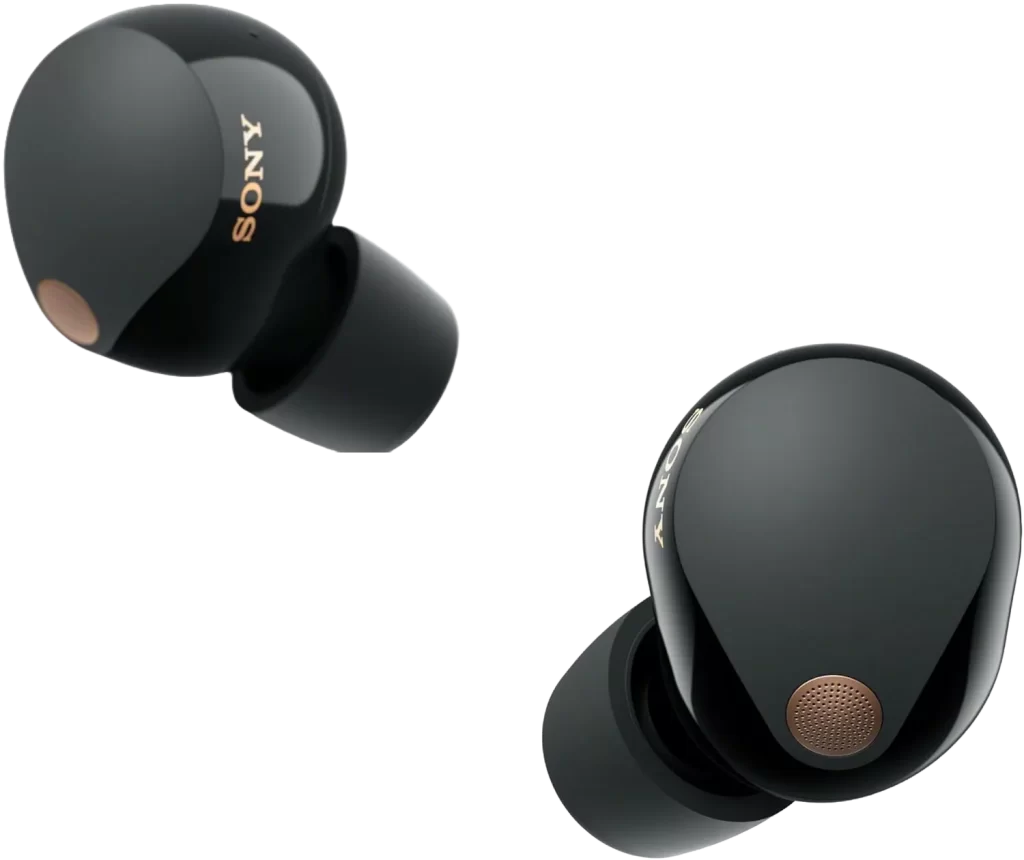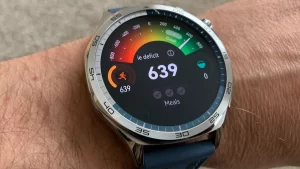Sony WF-1000XM5: Are These the ONLY Earbuds You’ll Ever Need?

I’ve been using the Sony WF-1000XM5 earbuds for a little while now, and I wanted to give you my honest thoughts on them. I’ve tried many different earbuds over the years, so I feel like I have a good sense of what works well in daily life. These Sonys have some really impressive aspects, but like any product, they also have a few areas that aren’t absolutely perfect. My goal here is to share my real-world experience, just like I’d tell a friend, focusing on how they feel and perform in everyday situations.
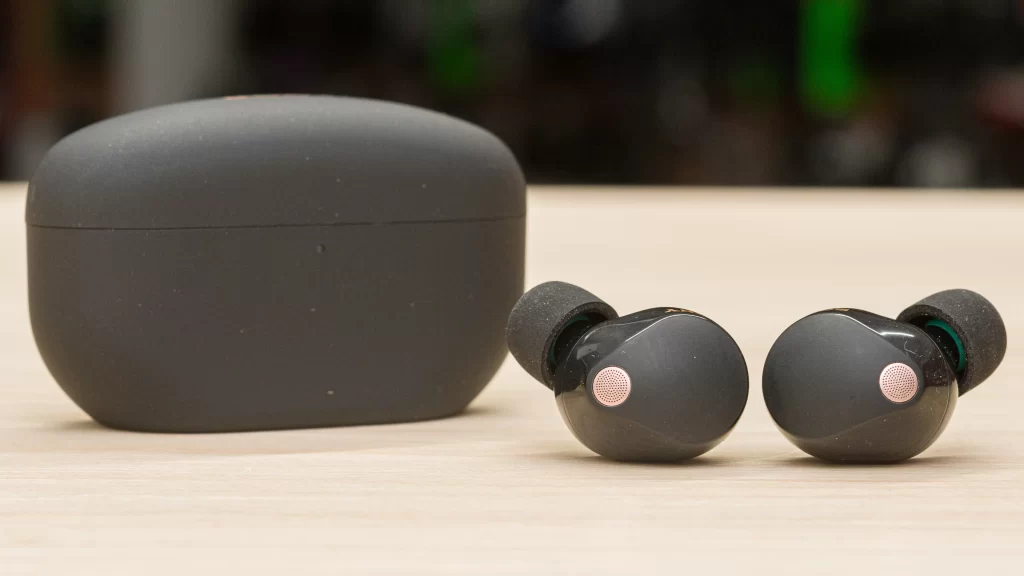
First Impressions and How They Feel
The first thing that genuinely surprised me when I unboxed the Sony WF-1000XM5s was their size. I’d seen pictures, but holding them in my hand, they felt surprisingly tiny. My previous earbuds always had a bit more bulk to them, and I often felt like they protruded a bit too much from my ears. These, however, are delightfully compact. They feel very light, almost like they disappear once they’re in. The charging case is equally sleek and small. It’s truly pocket-friendly, and I mean any pocket – jeans, jacket, even a shirt pocket – without creating an unsightly bulge. This might seem like a minor detail, but for someone like me who carries earbuds everywhere, it’s a huge convenience. No more having to carry a separate pouch or a backpack just for my earbuds and their chunky case.
Putting them in for the first time was also a pleasant surprise. Sony redesigned these, giving them a smoother, glossy inner surface. This change, combined with their reduced size, really helps them sit comfortably and securely in my ear canal. I often find myself forgetting I’m wearing them, even after several hours of continuous listening. There’s no pressure or discomfort that can sometimes come with larger earbuds pressing against the ear. They come with these unique foam ear tips in various sizes. These aren’t like your typical silicone tips; they have a bit more give and mold to your ear canal, creating an excellent seal. This seal is absolutely crucial. Not only does it help keep the earbuds in place, but it also plays a significant role in both the sound quality and the effectiveness of the noise-canceling feature. A good seal means better bass and better blocking of outside noise. I’ve worn them during brisk walks, light jogs, and even while doing chores around the house, and they’ve stayed put without any issues. They also have a sweat resistance rating, which means they can handle a sweaty workout at the gym or a sudden light drizzle without me worrying about damaging them. I wouldn’t take them swimming, but for everyday active use, they seem robust enough. The only minor critique here, and it’s a very minor one, is that the glossy finish on the earbuds themselves can make them a tiny bit slippery when you’re trying to pick them up from the case or adjust them with slightly damp fingers. It’s something you quickly get used to, but it was noticeable at first.

The Sound Experience
This is, without a doubt, where the Sony WF-1000XM5s truly shine for me. The sound quality is nothing short of fantastic. Sony has included a new, larger speaker component inside these tiny buds, and you can immediately hear the difference it makes. The bass is deep, rich, and impactful without ever being muddy or overwhelming the rest of the sound. You don’t just hear the bass; you feel it, which adds a fantastic layer to certain music genres like electronic or hip-hop, but also gives classical pieces a fuller, warmer foundation. The high notes are incredibly clear and crisp, sparkling without being harsh or tinny. And what really impresses me are the mid-range frequencies – where vocals and many instruments sit. Voices in songs come through with incredible presence and clarity, almost as if the singer is performing right in front of you. Whether I’m listening to my favorite rock anthems, intricate jazz compositions, soothing classical pieces, or just a simple podcast, everything sounds genuinely excellent.
The term “immersive” often gets thrown around a lot, but with these earbuds, it truly applies. It feels like the music wraps around you, pulling you into the soundscape. It’s not just sound hitting your ears; it’s an experience that makes you feel connected to the audio. For example, in a complex orchestral piece, I can clearly pick out individual instruments and their placement, which is something I’ve rarely experienced with earbuds. When listening to live recordings, you can almost sense the acoustics of the venue. Even with standard music streaming services, Sony’s DSEE Extreme technology works wonders. It’s designed to upscale compressed digital music files, breathing new life into your favorite songs by restoring details that might have been lost. It’s not just a subtle tweak; it genuinely makes music from Spotify or Apple Music sound richer and more dynamic than I’ve heard on other earbuds. It’s like listening to familiar tracks again for the first time, discovering nuances you never noticed before.
For those who are interested in the absolute best audio quality, these earbuds support LDAC, Sony’s high-resolution audio coding technology. If your phone or music player also supports LDAC and you have high-resolution audio files, these earbuds are equipped to deliver even more detail and fidelity. While I mostly stream standard quality music, knowing that capability is there for special listening sessions is a bonus. The difference with high-res files can be quite profound, offering an even wider soundstage and more precise instrument separation. Overall, if sound quality is a major deciding factor for you, these Sonys are a powerhouse and a significant reason to consider investing in them. They truly elevate the listening experience for all types of content.
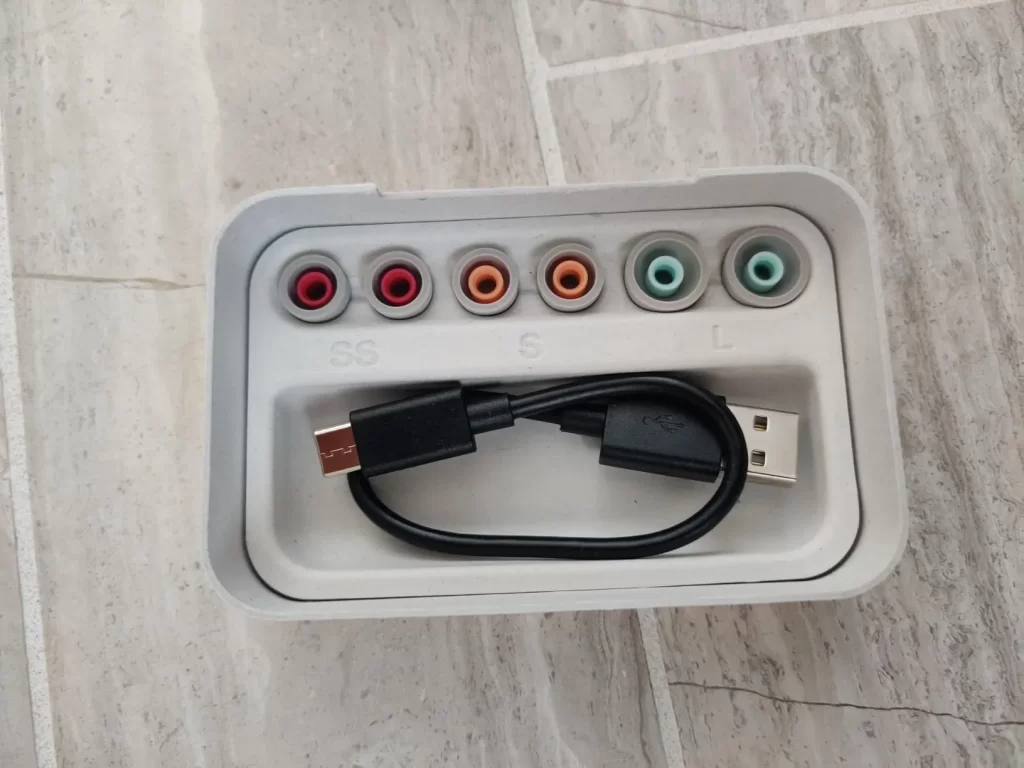
Noise Cancellation (ANC)
Sony has built a strong reputation for its noise-canceling technology, and these earbuds definitely continue that tradition. They pack a dedicated chip solely for noise cancellation, and it works remarkably well. When I have them in and the ANC is active, most of the outside world just melts away, allowing me to fully immerse myself in my audio. This has been a godsend in so many daily situations. For instance, on my daily commute on a noisy bus, the low rumble and engine sounds are almost completely muted. In a busy coffee shop, the clatter of cups, the whir of the espresso machine, and even most of the surrounding chatter fade into the background, letting me focus on my work or just enjoy my music in peace. They also do a decent job with the constant hum of office air conditioning or the drone of an airplane engine, making long flights much more tolerable.
However, I have to be honest: while they are very effective, they don’t create an absolute silence bubble in every single situation. Some very specific, sudden loud noises, like a car horn blaring right next to me or a sudden shout, might still break through faintly. Also, very high-pitched sounds can sometimes penetrate a bit more than lower frequencies. It’s not a deal-breaker, but it’s worth noting that while they are excellent, they aren’t magic. Compared to other premium noise-canceling earbuds I’ve tried, these are right up there with the best, often surpassing them in their ability to handle a wide range of ambient noise.
Then there’s the ambient sound mode, which is the opposite of noise canceling. This feature lets outside sounds in through the microphones, so you can still be aware of your surroundings. This is incredibly useful. For example, when I’m walking near busy streets, I can turn on ambient mode to hear approaching traffic, which makes me feel much safer. If I step into a shop or need to quickly order a coffee, I can activate it without taking the earbuds out, hear what’s happening, and then switch back to my music seamlessly. It’s also great for hearing important announcements at an airport or train station.
Sony also includes an “adaptive sound control” feature, which is supposed to automatically adjust the noise canceling or ambient sound based on your activity – like if you’re sitting, walking, or running. In theory, this sounds amazing, but in practice, I’ve found it can be a bit of a mixed bag. Sometimes it works perfectly, smoothly transitioning as I move from my desk to walking outside. Other times, it can be a minor interruption, switching modes a bit too frequently or at times when I don’t expect it, which can be a little distracting. For instance, it might switch to “walking” mode when I’m just shifting in my chair, causing a slight change in the soundscape. Thankfully, you can easily tap the left earbud to manually switch between noise canceling and ambient sound, or you can even turn off the adaptive feature entirely if you prefer more manual control, which is what I often end up doing for consistency. Despite these minor quirks, the core noise cancellation and ambient sound features are robust and highly effective for daily use.

Battery Life and Staying Connected
The battery life on the Sony WF-1000XM5s is pretty solid and has generally met my expectations for daily use. I typically get about 7 to 8 hours of continuous listening time on a single charge, with noise canceling turned on for most of that. This has been more than sufficient for my daily commute, a full workday, and even a workout without needing to pop them back into the case. For example, I can use them during my morning commute (about an hour), then for several hours during work to focus, and still have enough juice for an evening walk or a quick grocery run without worrying about them dying.
The charging case is also a significant part of the battery story. It’s compact, as I mentioned, but it holds about three additional full charges for the earbuds. This means I can easily go several days – usually 3 to 4 days of fairly heavy use – without needing to find an outlet for the entire setup. When I do need to recharge the case, it takes a couple of hours, which isn’t lightning fast but is perfectly reasonable for an overnight charge or during a longer break. I also appreciate the convenience of wireless charging for the case, which means I can just drop it on a charging pad without fiddling with cables, adding to the overall ease of use.
For connectivity, these earbuds utilize the latest Bluetooth standard (Bluetooth 5.3), which generally translates to quick pairing and a stable connection. When I first pull them out of the case, they connect to my phone almost instantly, ready to play audio. In terms of range, I can usually walk a good 30-40 feet away from my phone in an open space without any noticeable dropouts. Inside my apartment, they maintain a connection through a couple of walls, though very thick walls or multiple obstacles can cause occasional stuttering, which is pretty standard for Bluetooth devices.
One of the standout features for me is the multi-point connection. This allows you to connect the earbuds to two devices simultaneously. For example, I can be listening to music on my laptop, and if a call comes in on my phone, the earbuds will seamlessly switch over so I can answer it. Once the call ends, they automatically switch back to my laptop. This is incredibly useful for productivity, especially if you juggle work on a computer and personal communications on your phone. It removes the minor hassle of manually disconnecting and reconnecting between devices. The switching process is generally very smooth, though occasionally there might be a brief half-second pause.
However, I have heard from some users, and experienced minor quirks myself, regarding connection to Windows computers. While they do connect, the experience isn’t always as flawless as with a smartphone or tablet. Sometimes, they might show as “connected” but produce no sound, requiring me to toggle Bluetooth on my PC or even restart the earbuds. It seems to be related to certain audio codecs or driver interactions with Windows, and while there might be workarounds or third-party solutions, it’s not the seamless plug-and-play experience you’d expect from premium earbuds with a modern laptop. If your primary use case involves frequent switching and heavy reliance on a Windows PC, it’s something to be aware of and potentially research further before buying. For phone and tablet use, they are exceptionally reliable.
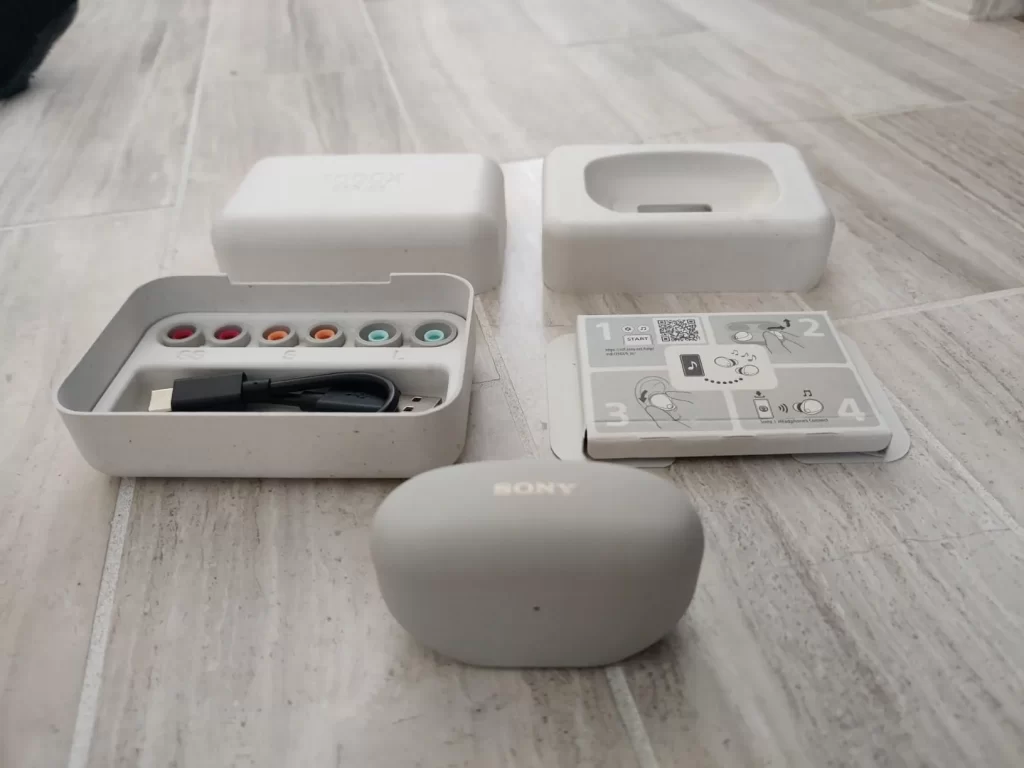
Call Quality
Taking phone calls with the Sony WF-1000XM5 earbuds has been a genuinely positive experience, and honestly, it’s one of their strongest suits. Sony incorporated something they call “bone conduction technology” into these earbuds, and it really seems to make a difference. In simple terms, this technology helps pick up the vibrations from your voice directly through your jawbone, separating your speech from distracting background noise. This means that even in challenging environments, the person on the other end of the line can hear me clearly.
I’ve tested this feature extensively in various real-world scenarios. For example, I’ve taken calls while walking on a busy street with constant car traffic, and the person I was speaking with confirmed that they could hear my voice distinctly, with the traffic sounds being significantly minimized to a low hum, if heard at all. The same goes for windy conditions – a common bane for earbud microphones. With these Sonys, even when a strong breeze was blowing directly at me, my voice still came through without being muffled or distorted by wind noise. This is a huge leap compared to many other earbuds I’ve used in the past, where I’d often have to cup my hand over my mouth or find a sheltered spot just to be heard. I’ve also taken calls on crowded public transport, where the general chatter and announcements would normally make it impossible to have a clear conversation, but with these, I’ve managed to communicate effectively.
The clarity of the microphone for the person on the other end of the call is truly impressive. They reported that my voice sounded natural and full, not tinny or distant like some other earbud microphones can make you sound. This is a critical feature for me, as I often take work calls while on the go.
Another useful aspect is the transparency mode during calls. This allows me to hear my own voice more naturally, preventing that “plugged ear” feeling that can make you talk too loudly. It also means I can have a quick conversation with someone in person without having to take the earbuds out, which is incredibly convenient. The overall experience of making and receiving calls on these earbuds has been consistently excellent, making them a reliable tool for communication, not just for listening to music.
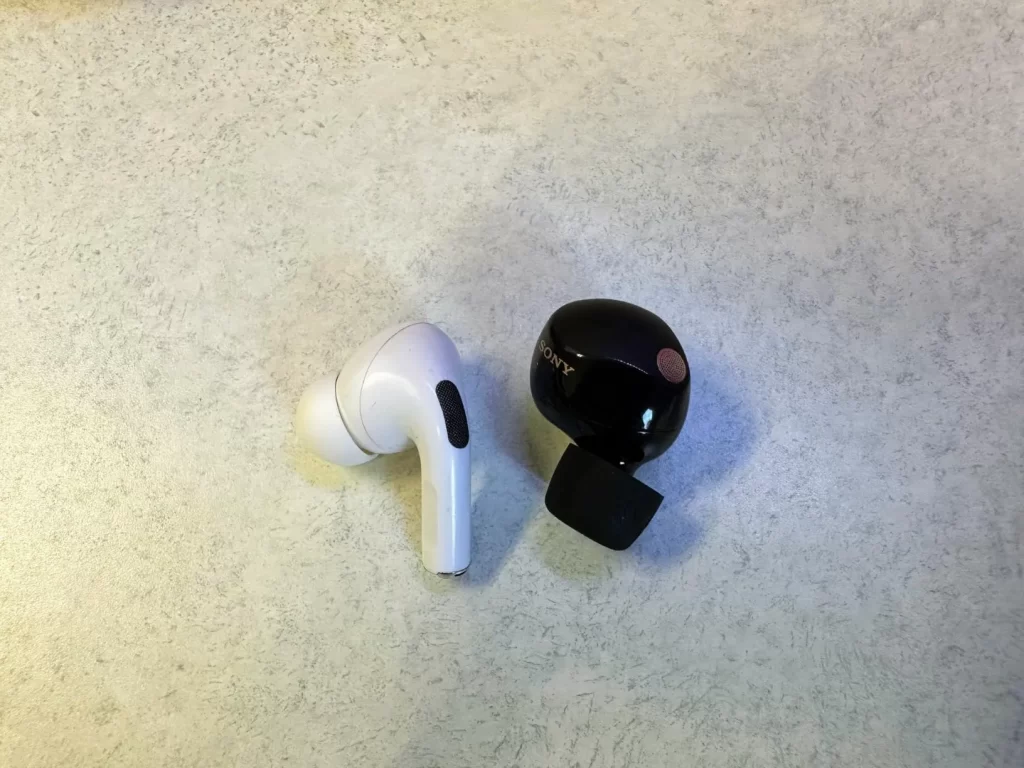
Features and the App
The Sony WF-1000XM5 earbuds are absolutely packed with features, and most of them are managed through Sony’s companion app. When you first set them up, the app guides you through various options, and it can feel a bit overwhelming with the sheer number of settings and customizations available. While it’s great to have so much control, the setup process can feel a bit lengthy, and sometimes the app’s design itself feels a little less modern or intuitive compared to some other well-known earbud apps. It’s functional, but not always the most streamlined user interface.
Within the app, you can fine-tune the sound to your liking using a comprehensive equalizer. This is a powerful tool for audiophiles or anyone who wants to tweak the bass, mids, and highs to suit their personal preference or the genre of music they’re listening to. You can save custom EQ presets, which is a nice touch. Beyond sound, you can customize the touch controls on each earbud. For instance, you can decide whether a tap pauses music, skips tracks, or activates your voice assistant.
However, one specific control I’ve found consistently odd is the volume adjustment. By default, it requires four consecutive taps on the left earbud to lower the volume and four taps on the right earbud to raise it. This feels incredibly clunky and slow, especially when you need to quickly adjust the volume. What’s more frustrating is that you can’t easily remap this function in the app to something simpler, like a long press or a different gesture. This is a notable inconvenience in daily use and stands out as a design oversight given the otherwise thoughtful features.
One of the “clever” features is “Speak-to-Chat.” This automatically pauses your music and activates the ambient sound mode whenever you start talking. It’s fantastic for quick conversations – you don’t have to fumble for a button or take an earbud out if someone approaches you to chat. The music just stops, and you can hear them clearly. However, I’ve found its sensitivity can sometimes be a little too high. It occasionally activates if I cough, sneeze, clear my throat, or even hum along to a song. This can be a minor interruption, but thankfully, you can adjust its sensitivity in the app or turn the feature off entirely if it becomes more annoying than helpful.
The earbuds also support 360 Reality Audio, which is Sony’s spatial audio format. With compatible music services and content, this feature aims to create a more immersive, “live concert” like listening experience, making it feel like sound is coming from all around you. When it works with the right tracks, it can be genuinely impressive and adds another dimension to the audio. It’s more of a “nice-to-have” feature than a “must-have” for most people, but it’s a cool demonstration of what the earbuds are capable of.
Another minor point of frustration is the lack of a robust “Find My Earbuds” feature. While they can sometimes show their last connected location on a map through your phone’s Bluetooth settings, it’s nowhere near as precise or helpful as the integrated finding features offered by some competitors. Given their small size and cost, a more reliable way to locate a lost earbud would be a welcome addition. Despite the few quirks, the sheer number of features and customization options generally enhance the overall user experience, making these highly adaptable earbuds.

A Few Limitations
While I genuinely enjoy using the Sony WF-1000XM5 earbuds, it’s important to talk about their limitations, as no product is perfect.
First and foremost, the price point. These are premium earbuds, and they come with a premium price tag. For many, this will be a significant investment. The question then becomes, do the features and performance justify that cost? For me, considering the exceptional sound quality and excellent call performance, the value is there, but it’s a personal decision that depends on individual priorities and budget. If you’re looking for basic earbuds for casual listening, these might be overkill, but if you prioritize audio fidelity and advanced features, they hold their own.
As I touched on earlier, while the noise canceling is incredibly strong, it isn’t always absolute perfection in every single environment. For example, while it mutes consistent low rumbles from vehicles or air conditioning very effectively, sudden, sharp noises like a loud clap, a baby crying intensely close by, or a high-pitched drilling sound might still penetrate slightly. It’s not a complete silence bubble, and if your primary, sole reason for buying earbuds is to achieve absolute silence in the loudest environments, you might find certain nuances. Some competitors are said to have a slight edge in handling very specific, challenging noise profiles, but the Sony’s performance is still top-tier for most everyday scenarios.
The volume controls, as frustrating as they are, bear repeating as a significant limitation. The requirement for four taps on an earbud to adjust volume is simply not intuitive or efficient. In a world where many earbuds allow simple swipes, single taps, or long presses for volume control, this feels like a step backward. It means I often resort to adjusting the volume directly on my phone, which defeats some of the convenience of having touch controls on the earbuds themselves. This is a daily annoyance that I haven’t been able to fully adapt to.
While I haven’t experienced consistent sound dropouts, some users have reported occasional glitches or momentary disconnections, especially when moving away from their device or in crowded wireless environments. While my experience has been largely stable, it’s worth noting as a potential point of frustration for some, particularly with Windows PC connections as previously mentioned. This can manifest as brief audio interruptions that, while usually quick to resolve, can break immersion.
For users deeply integrated into the Apple ecosystem, there might be very minor differences compared to using Apple’s own AirPods Pro. Things like automatic switching between Apple devices (though the multi-point connection on Sony helps mitigate this) or the “Find My” network integration for locating lost earbuds might feel a tiny bit less seamless. While these Sonys work exceptionally well with iPhones and iPads, some of those very specific Apple-centric features might be missed by long-time Apple users. However, the strong sound quality and feature set of the Sonys often outweigh these minor ecosystem differences for many.
Lastly, a minor, but recurring, observation from myself and others relates to the foam ear tips. While they provide an excellent seal and comfort initially, some users find that they can get dirty easily or wear out faster than silicone tips, potentially requiring replacements over time. Also, as mentioned, the glossy surface can make the earbuds feel a bit slippery when handling them, which, while not leading to them falling out of the ear, can make picking them up from the case slightly more challenging than a matte finish would be. These are small gripes, but they contribute to the overall daily experience.
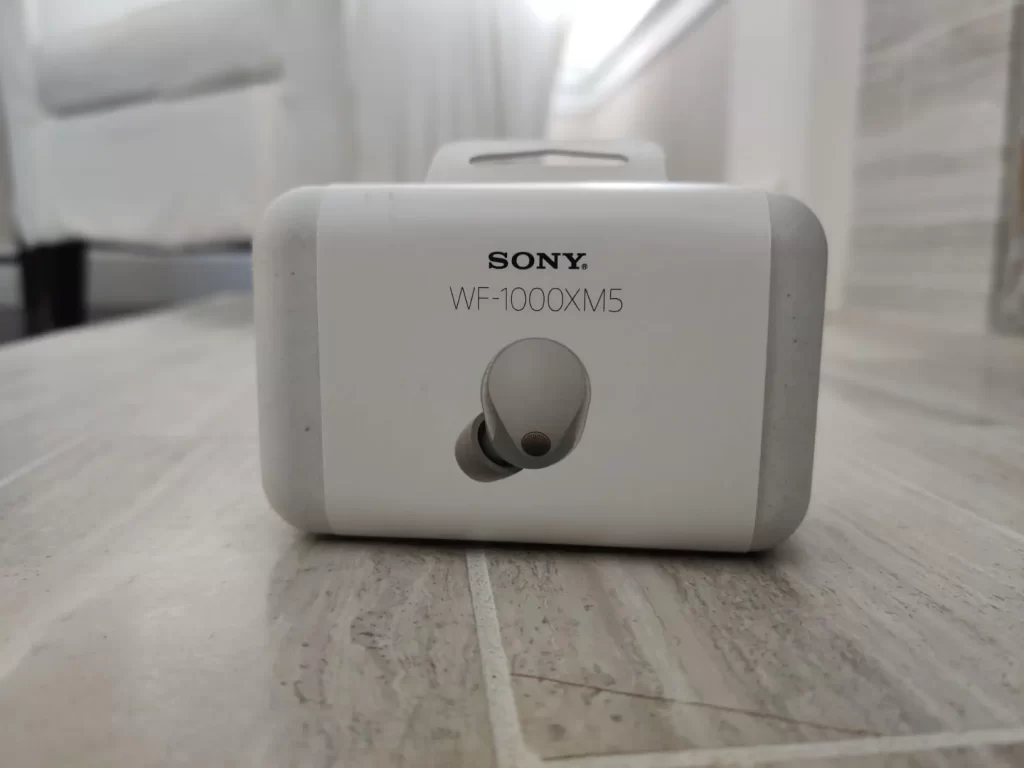
My Overall Thoughts
After spending a considerable amount of time with the Sony WF-1000XM5 earbuds, my overall impression is overwhelmingly positive. They truly are an impressive pair of wireless earbuds that deliver on most of their promises, albeit with a few minor quirks.
The standout feature, for me, is undeniably the sound quality. These earbuds create a rich, detailed, and incredibly immersive audio experience that genuinely elevates any music or podcast I listen to. The bass is powerful, the mids are clear, and the highs are crisp, making them a joy for any genre. Paired with Sony’s audio enhancement technologies, even standard streaming quality sounds exceptional. For anyone who prioritizes audio fidelity, these are a top-tier choice.
Comfort is another huge win. Their compact size and redesigned shape mean they sit snugly and comfortably in my ears for hours on end. I can wear them through a full workday, a long flight, or a lengthy workout without feeling any discomfort or pressure. This, combined with their sweat resistance, makes them highly adaptable for various lifestyles.
The call quality is also surprisingly good. Thanks to the bone conduction technology, my voice comes through clear and distinct, even in noisy or windy environments, which is a major advantage for both personal and professional calls on the go.
While the noise canceling is strong and effective for most situations, it’s worth managing expectations for absolute silence in the most extreme noise scenarios. It’s certainly among the best available in earbuds, but not quite a complete vacuum from reality. The ambient sound mode, on the other hand, is excellent for situational awareness.
The companion app, while feature-rich, could benefit from a more modern design and intuitive layout. And the multi-tap volume control is a baffling design choice that I hope Sony addresses in future iterations. These small usability issues do detract slightly from an otherwise polished product. The connectivity, especially multi-point, is generally smooth, though Windows users might face minor setup hiccups.
So, who are these earbuds best for? I would say they are ideal for:
- Sound enthusiasts: If you truly care about audio quality and want your music to sound its best on the go.
- Frequent travelers: The excellent noise canceling and comfortable fit make long journeys much more pleasant.
- Office workers or students: They help create a focused environment by cutting out distractions.
- Anyone who takes a lot of calls: The superior microphone performance is a real asset.
In conclusion, despite a few minor limitations like the quirky volume controls and the app’s interface, the Sony WF-1000XM5 earbuds offer a compelling package of superb sound, excellent comfort, and strong noise cancellation. They are a premium product, and while the price reflects that, the overall user experience and performance generally justify the investment. They definitely hold their own against the competition and are, for me, a truly impressive pair of earbuds.
